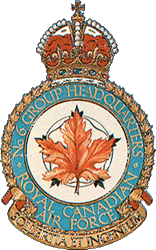
February 27, 1945
102 Halifaxes from 408, 415, 420, 425, 426, 427, 429, and 432 Squadrons were joined by 85 Lancasters from 419, 424, 428, 431, 433, and 434 Squadrons on an attack at Mainz. The crews were over the target at between 15,000 and 18,000 feet, releasing 534,000 lbs of high explosives and 891,000 lbs of incendiaries. According to reports, the target was cloud covered, but severe damage was caused.
![]()
P/O A. Brown from 408 Squadron bombed an alternate as there
were too many aircraft in the target area.
10 crews commented
on the US flying fortresses that flew through the gaggle,
breaking it up.
![]()
F/O G. Hyland from 415 squadron returned early as they could
not raise the under carriage.
F/O R. Evans was hit by
incendiaries, 3 feet of the stbd aileron was missing.
![]()
F/O J. Smith from 419 Squadron was hit by flak, the port outer
was u/s. They landed safely at base on 3 engines.
F/O D.
Nichols was hit by flak, the port outer was u/s. They landed
safely at base on 3 engines.
![]()
F/Lt H. Taylor from 424 Squadron had one engine u/s on return. They landed safely at base on 3 engines.
![]()
F/O G. Chabot from 425 squadron returned early as the hydraulics were u/s.
![]()
W/Cdr C. Black from 426 Squadron had the port wing tip removed by a falling bomb.
![]()
F/O R. Scott RCAF![]() from 429 Squadron, flying Halifax III RG-347 coded ZL-G, borrowed
from 427 Squadron blew a tire on takeoff and crashed out the
runway.
from 429 Squadron, flying Halifax III RG-347 coded ZL-G, borrowed
from 427 Squadron blew a tire on takeoff and crashed out the
runway.
F/Sgt G. Fisher RCAF![]()
F/O S. Carson RCAF![]()
F/O K. Whitehouse RCAF![]()
P/O A. Mackie RCAF![]()
F/Sgt M. Brewer RCAF![]()
F/Sgt J. Mac Eachern RCAF
Only the rear gunner survived after the Halifax exploded and burned.
![]()
P/O D. Murray from 431 squadron returned early as there was a navigation error.
![]()
F/Lt A. Bews and F/O J. Paul from 432 Squadron were hit by flak, not serious.
![]()
Many crews from 434 Squadron commented on the flying
fortresses flying through the bomber stream.
![]()